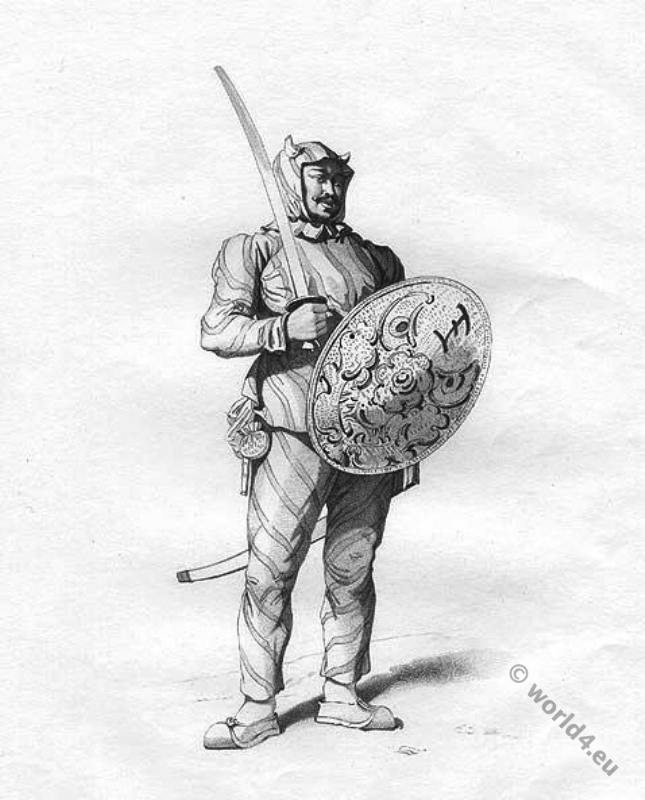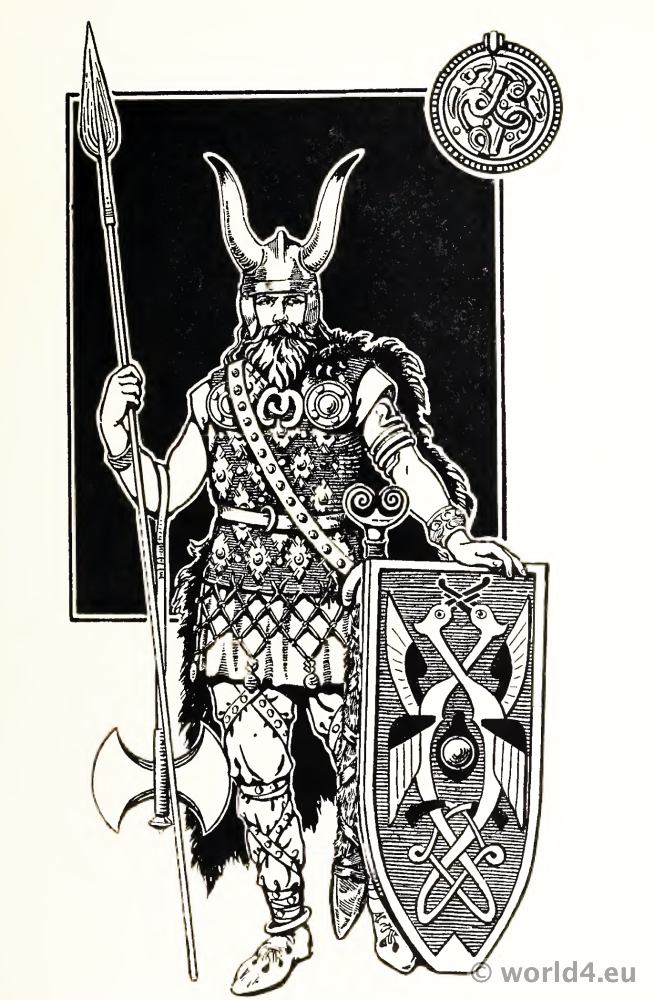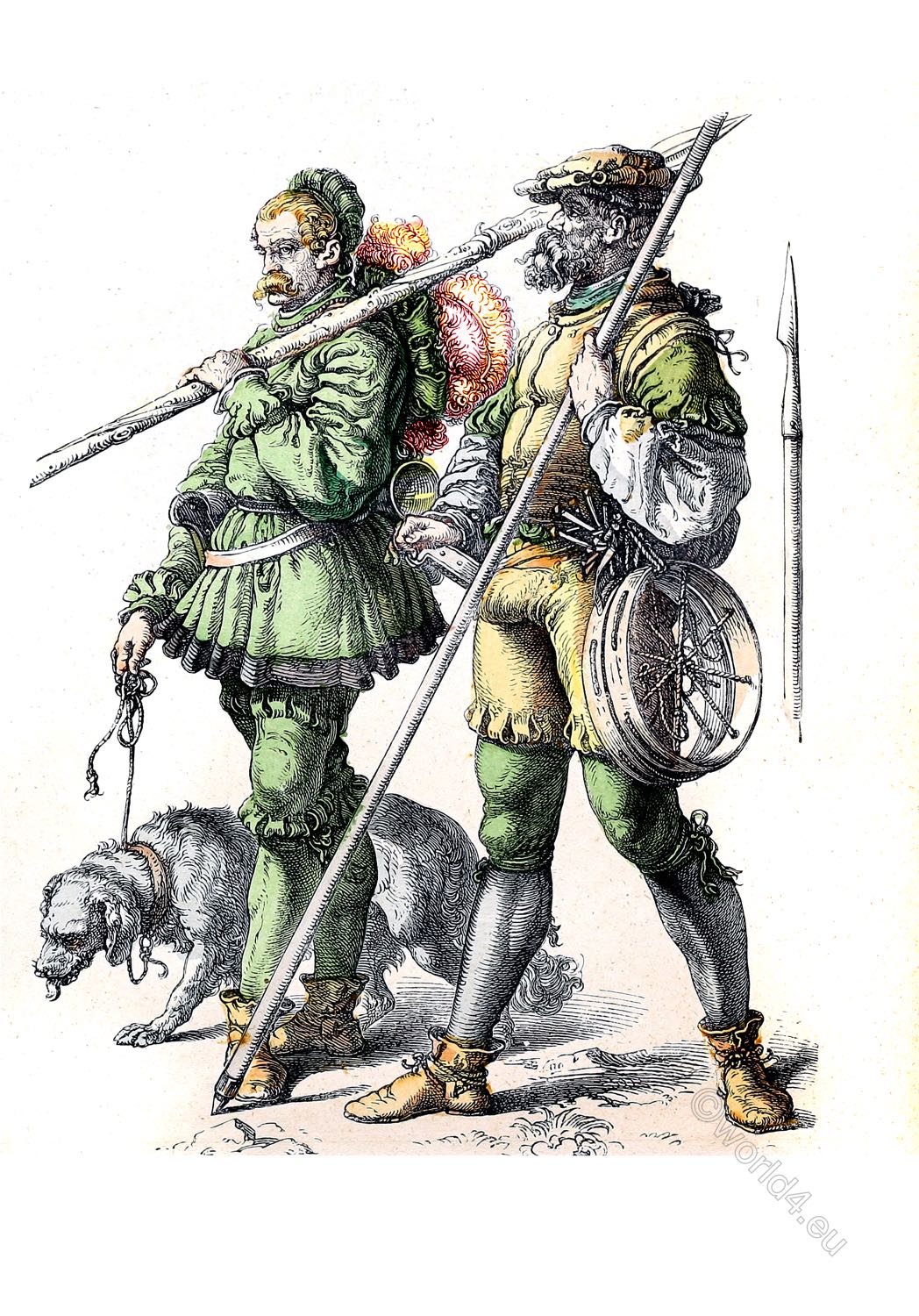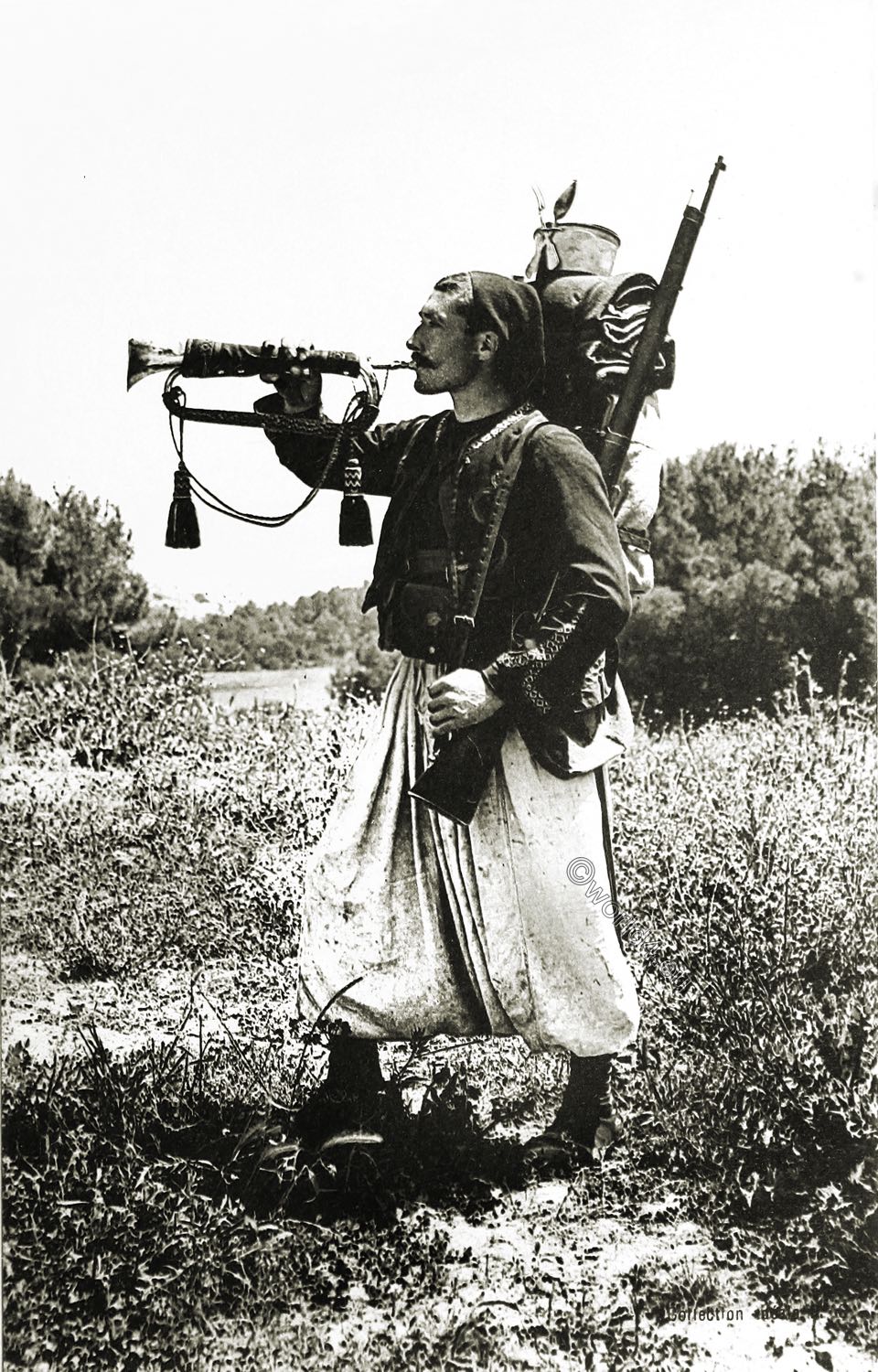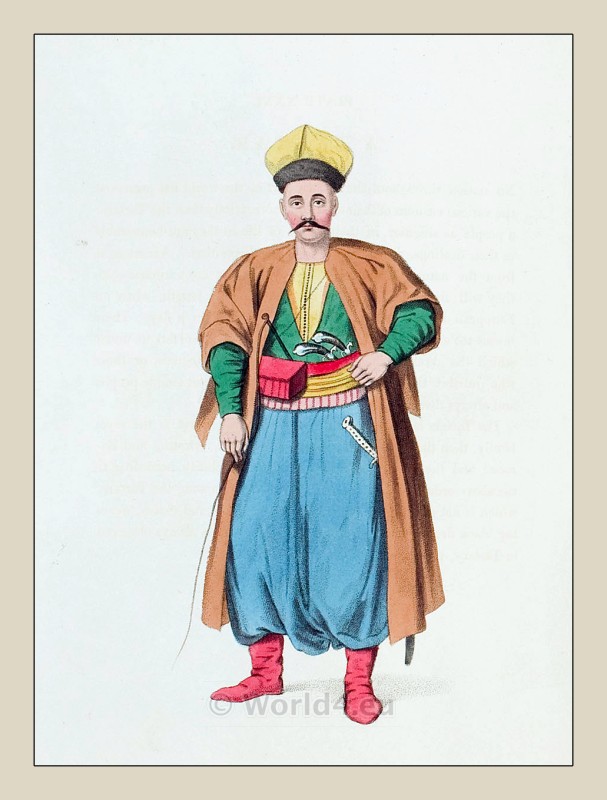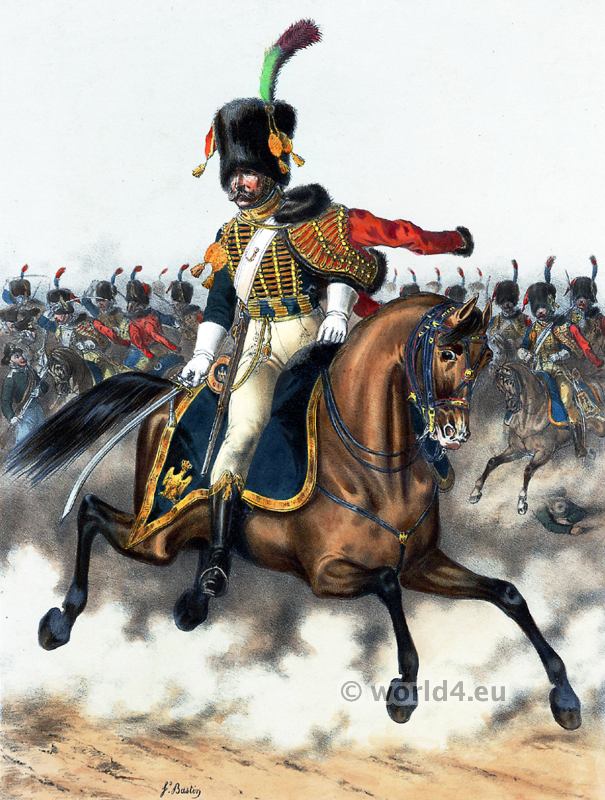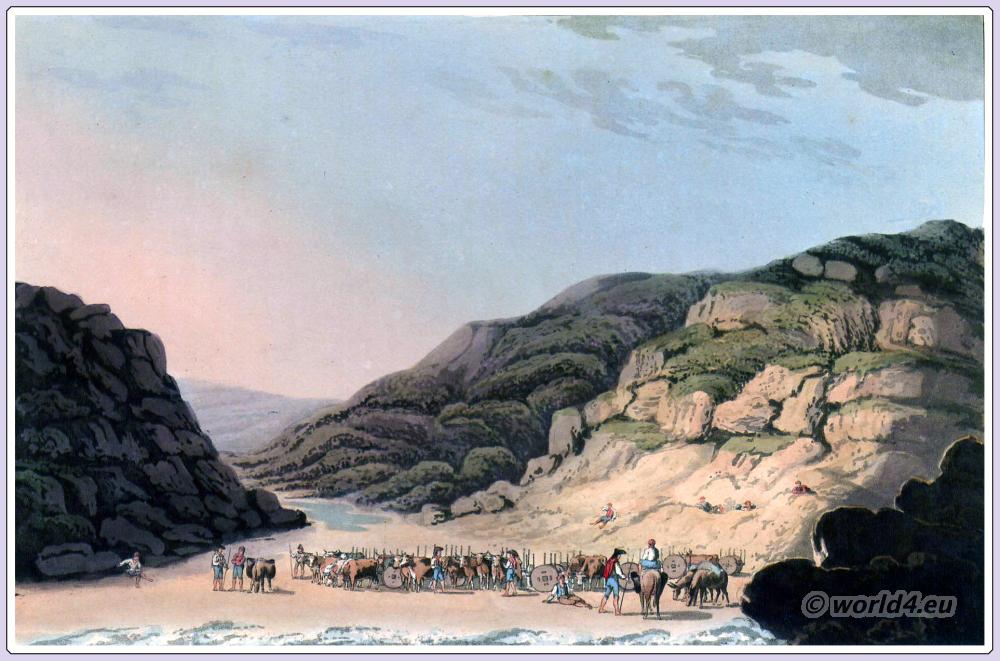A Tatar Tiger Guard of the Chinese Emperor.
The Tatar soldiers form the garrison of towns; and they are, in an especial manner the guards of the emperor. In each town they are under a general, who is independent of the officer who commands outside the walls. He has two adjutants attached to his command: they are called Too-tung; and one is denominated “right,” the other “left,” from their taking command of the left and right wings of the army. The general himself is named Tseang-keun; he has the head of a tiger embroidered on his outward dress, and wears a peacock’s feather, with three eyes. This officer is always a member of the provincial council; and frequently acts independently of the civic authorities.
At Beijing, there are eight divisions of Tatar troops, each under its peculiar colored banner.
These are:
1. The vanguard, picked from the Mantchoo and Mongol troops, under eight commanders.
2. A body of infantry, or armed police, under a commander and two lieutenant-generals.
3. A body of artillery, under Mantchoo and Mongol commanders.
4. A body of sealers, under the same command.
5. A troop of pioneers.
6. A troop of lancers.
7. A troop of falconers.
8. A troop of wrestlers and archers.
In times of peace, the services of all these troops are confined to Peking; and, in other towns, the Tartar soldiers execute no duties beyond the walls, except when foreign war or domestic rebellion call for their services.
The “life-guards” of the emperor are called “tiger-soldiers.” They wear a striped dress of black and yellow, resembling the tiger’s skin; and close caps with two ears projecting, as seen in our engraving. The caps are formed of split bamboo, “so compactly interwoven, as to be capable of resisting a violent blow.” The shield is made of the same material, and has the head of a tiger or of some other fierce animal, or a terrible image, painted upon it. The duty of these guards is, to attend the emperor, and to protect him from all enemies. The highest military post in China is that of the Tseang-keun. It cannot be filled by a Chinese, indeed, it is the rule, that officers of one nation must not command the troops of the other.
Neither Tatars nor Chinese display any knowledge of military strategics: and that several hill tribes, even in the interior of the country, should have maintained their independence to the present day, shows the real weakness of the military resources of the empire. “One very singular feature we must not forget to notice, in regard to the military officers of China. They are all subject to corporal punishment, and very often experience it, together with the punishment of the cangue, or movable pillory. This parental allotment of a certain quantum of flagellation and personal exposure is, occasionally, the fate of the highest officers; and, upon the whole, must be regarded as a very odd way of improving their military character.”
Military colonies, somewhat resembling those of ancient Rome, have been formed in China. They originated with the emperor who built the Great Wall ‘, but, under him, they were mere military posts, established to check the incursions of bands of pillagers. Finding them eminently useful for that purpose, the number of colonists was increased, and other colonies were formed, not only on the frontiers, but in the interior of the empire, where agriculture had been neglected. They are of two classes-those intended for the defence of the frontiers against invasion, and those established, in Mongolia and the Eastern provinces, for purposes partly political and partly strategical. Several of these colonies were formed between 1736 and 1820, and they are all flourishing.
The military colonie are part of the imperial domain. When established, every officer and man-from the general downwards-has a plot of ground given to him, which he cultivates at his own cost, appropriating the produce to the support of his family, and to defraying the expenses of the colony. A colonist cannot sell his land, or bequeath it at his death, but when the latter event happens, the emperor disposes of it. In 1812, the colonies were estimated to cover 4,420,000 acres; at present (1858) they extend over 7,500,000 acres. They have increased, and are increasing, under the present emperor, who loses no opportunity of planting soldiers upon the uncultivated and unproductive parts of his territory.
Source: China, in a series of views, displaying the scenery, architecture, and social habits, of that ancient empire. Drawn, from original and authentic sketches, by Thomas Allom. With historical and descriptive notices by the Rev. G. N. Wright.
Related
Discover more from World4 Costume Culture History
Subscribe to get the latest posts sent to your email.

